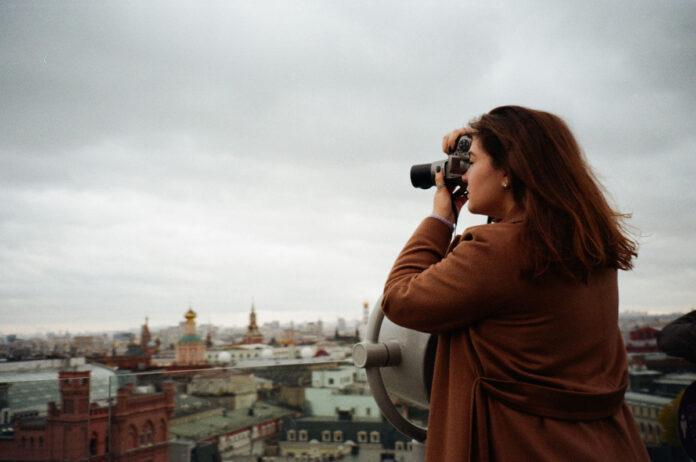
Photojournalism is a powerful form of storytelling that relies on impactful images to convey news and evoke emotions. However, the ethical considerations surrounding photojournalism are unique and demand careful navigation. Photographers and journalists must balance the responsibility of accurately representing events with the sensitivity required when capturing and publishing photographs. This article delves into the ethical principles specific to photojournalism, including obtaining consent, handling graphic imagery, and avoiding photo manipulation, to guide journalists, media personnel, and journalism students in responsible and ethical photojournalistic practices.
I. Consent in Photojournalism: Respecting Subjects’ Dignity and Privacy:
Obtaining consent from individuals photographed is essential in photojournalism, especially when the images are used in sensitive or personal contexts. Respecting subjects’ dignity and privacy is paramount.
Case Study: The controversy surrounding the photograph of Aylan Kurdi, a Syrian refugee child who drowned, highlighted the importance of obtaining consent when publishing sensitive images.
Practical Tip: Always seek verbal or written consent from subjects, especially in vulnerable situations.
II. Graphic Imagery: Balancing Truth and Sensitivity:
Graphic images can convey the harsh reality of events, but their publication can also cause distress to audiences and subjects alike. Striking a balance between truth-telling and sensitivity is crucial.
Case Study: Kevin Carter’s Pulitzer Prize-winning photograph of a vulture stalking a starving child in Sudan raised debates about the ethical implications of such graphic imagery.
Practical Tip: Evaluate the significance of graphic images in conveying the story and exercise caution in their publication.
III. Photo Manipulation: Preserving Truth and Objectivity:
Photo manipulation erodes the integrity of photojournalism by distorting reality. Journalists must avoid altering images to preserve truth and objectivity.
Case Study: The controversy surrounding the 2006 Lebanon War photographs by Adnan Hajj, which were digitally manipulated, emphasized the need for maintaining authenticity.
Practical Tip: Follow the ethical guidelines of news organizations and refrain from altering images.
IV. Contextual Accuracy: Providing Comprehensive and Fair Representations:
Accurate captions and context are essential in photojournalism to avoid misrepresentation and ensure comprehensive storytelling.
Case Study: Misleading captions accompanying photographs during the 2008 Mumbai attacks led to inaccurate reporting.
Practical Tip: Provide detailed, accurate, and fair captions to contextualize photographs.
V. Sensitivity to Cultural Norms and Customs:
In international photojournalism, photographers must respect cultural norms and customs, avoiding images that could offend or misrepresent communities.
Case Study: The criticism received for photographs of mourning rituals during the 2004 Indian Ocean tsunami highlighted the importance of cultural sensitivity.
Practical Tip: Research and engage with local customs to capture images with respect.
Quote: “Every photograph promises more than it delivers and delivers more than it intended.” – Susan Sontag
Five Questions and Answers:
1. Q: Why is consent crucial in photojournalism?
A: Obtaining consent from subjects ensures respect for their dignity and privacy when using their images for publication.
2. Q: How can photojournalists balance graphic imagery with sensitivity?
A: Photojournalists must evaluate the importance of graphic images in conveying the story while being mindful of potential distress to audiences and subjects.
3. Q: Why is photo manipulation unethical in photojournalism?
A: Photo manipulation distorts reality, eroding the integrity of photojournalism and compromising the truth-telling aspect.
4. Q: How can photojournalists ensure contextual accuracy in their photographs?
A: Providing accurate and comprehensive captions with photographs is crucial for contextualizing the images and avoiding misrepresentation.
5. Q: Why is cultural sensitivity essential in international photojournalism?
A: Cultural sensitivity ensures that photographers respect and accurately represent the customs and norms of the communities they photograph.
Role Model for Inspiration: Lynsey Addario – An award-winning photojournalist known for her powerful and poignant images covering conflicts and humanitarian crises worldwide, Lynsey Addario’s commitment to ethical storytelling and sensitivity to her subjects’ experiences make her an exemplary role model for aspiring photojournalists.
Popular Book: “Photojournalism: The Professionals’ Approach” by Kenneth Kobre – This comprehensive book provides valuable insights into the principles and ethics of photojournalism, serving as a useful guide for both aspiring and experienced photojournalists.
History of the Topic: Photojournalism has a long history that spans back to the advent of photography. From capturing historic events to chronicling social issues, photojournalists have played a crucial role in shaping public perception and informing the masses. The ethical challenges faced by photojournalists have evolved over time, with advances in digital technology and global connectivity introducing new concerns. Photojournalists continue to navigate these complexities to ensure that their work reflects truth, sensitivity, and respect for the subjects they photograph.
Overall Photojournalism is a powerful form of storytelling that requires a delicate balance between truth-telling and sensitivity. By adhering to ethical principles, obtaining consent, handling graphic imagery responsibly, avoiding photo manipulation, providing accurate context, and respecting cultural norms, photojournalists can uphold their role as credible and responsible storytellers. As journalists, media personnel, and students of journalism, it is our collective responsibility to recognize the impact of our photographs and approach photojournalism with the utmost respect and ethical consciousness.













